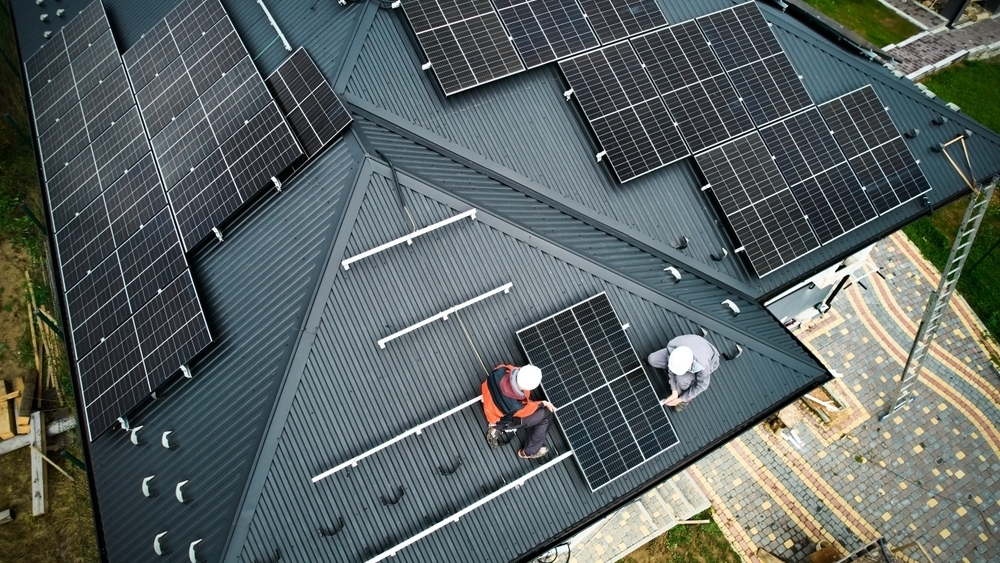solar power is at the heart of real estate’s decarbonisation agenda – NetZeroInvestor
In 2018, Big Yellow – the UK’s largest self-storage company – celebrated its 20th year in business. By then, it had amassed a vast storage property portfolio that trades on the London Stock Exchange, with a capacity equivalent to 90 football fields. That year, 14 of its stores were fitted with solar panels.
In the years that followed, that number increased at a pace faster than it did in the past. Today, there are 68 Big Yellow stores across the UK with solar panels on the rooftop.
Several listed real estate companies in the UK have a similar tale to tell. Their optimism over solar energy has soared in recent years. Yet, there is a catch. The commercial viability of solar power in real estate portfolios faces a myriad of challenges.
Reports published by listed real estate funds and companies in the UK hold crucial clues about what these challenges are and how developers are taking them on.
Build it in
For developers looking to cash in on the solar energy opportunity, the first challenge is design or redesign as the case may be. Fitting solar panels onto rooftops requires retrofitting – updating older designs to accommodate solar panels and the accompanying paraphernalia.
For older real estate assets in markets such as housing, this can be structurally challenging. For the UK, a country where
over 30% of housing stock was built before 1946, this is a hurdle that requires innovative thinking.
At Abrdn Property Income Trust , a listed real estate manager, retrofitting for solar power is a strategic priority and a design challenge. The trust recently implemented a 1.16 MW scheme, the largest solar installation in its portfolio, at Rainhill Road, Washington.
“Given the specifics of this property, we utilised an innovative product which combined the PV panels and roof covering, mitigating the need to refurbish or replace the roof. When incorporated with a comprehensive refurbishment, the property is now effectively operationally carbon net neutral”, the company said in its annual
report.
Others have also invested in design thinking. Assura, a FTSE-250 REIT focused on healthcare real estate launched a net zero design guide
last year. The guide incorporates the prospect of solar energy into the Assura’s design philosophy:
“The building should be oriented to maximise the amount of natural light and solar heat gain. The building should be placed within 30 degrees of due south, with roads ideally located on east-west axis”, a design principle in the guide states.
Financial viability
The optimism surrounding solar power, has a lot to do with its cost. Data from the International Renewable Energy Agency shows that the levelized cost of electricity for solar energy between 2010 and 2021, dropped by 89%. The largest reduction
in costs for any renewable energy technology within that period.
“Costs are expected to be even lower in the future, falling to a central estimate of £30/MWh in 2040 – or perhaps £26/MWh according to the lowest estimate. By this time, the cost of gas generation would have risen to an eye-watering £165/MWh” says Solar Energy UK, the industry’s trade
body.
That being said, solar installations across a property portfolio are still capital intensive. Some companies are looking into financing mechanisms to raise the funds. British Land for example has set up a “transition vehicle” – financed by an internal carbon tax
which currently sits at £90 per tonne of embodied carbon.
Others, such as Big Yellow which invested
£6 million in solar retrofitting last year are selling unused energy back into the grid, a practice known as net metering. The company currently has a £25 million program for solar PV retrofit, over half of which has already been invested.
Out of sight but still in mind
There is also the question of who exercises the control over energy supply – customers or property owners? For SEGRO, a REIT specializing in industrial and warehousing property, customers tend to procure the energy in most cases. In other instances, owners procure energy on the customers’ behalf.
The challenge in both cases is having visibility over energy demand and exercising control over the source of supply.
“As with many landlords, responsibility for sourcing energy and monitoring use rests with our customers for the majority of our portfolio”, SEGRO says
in its latest ‘Responsible SEGRO’ report.
What is out of sight at times, is not necessarily out of mind. Customer-linked emissions are included in SEGRO’s net zero target. “With the inclusion of our customers’ emissions in our science-based targets, obtaining good quality energy data and prompting our customers to purchase renewable energy is paramount”, the report adds.
Last year, SEGRO added 15MW of solar capacity to its portfolio, its largest year-on-year increase till date.
In the recent past, the footprint of rooftop solar installations in listed real estate portfolios has expanded. As cost reductions and investor expectations converge to incentivise an acceleration of this trend, its future depends on overcoming a few big challenges – design and visibility being key amongst them.


